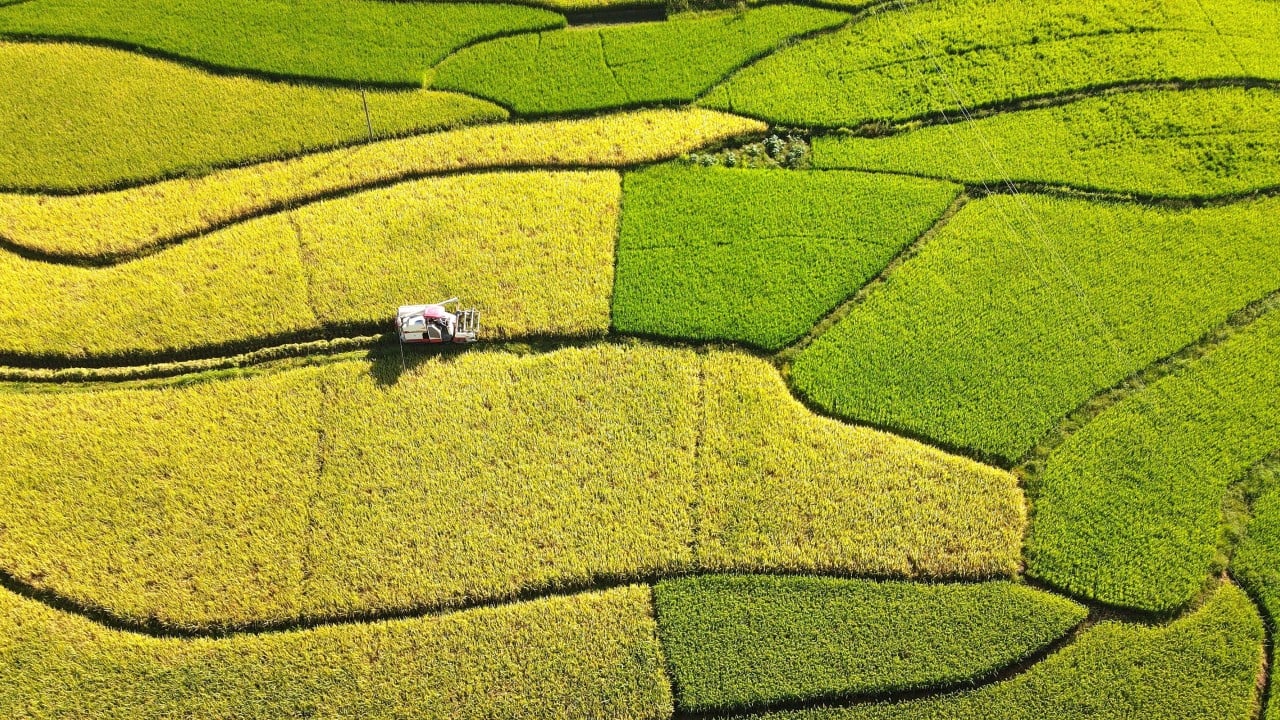Chinese and Swedish researchers have developed a high-yield rice variety that emits up to 70 per cent less methane than normal rice after uncovering how chemicals released by rice roots influence emissions.
Advertisement
The scientists said their new low-methane hybrid rice offered a promising strategy to address a future rise in rice-related emissions because of global warming and an increasing global population.
“We discovered that fumarate and ethanol are two major rice-orchestrated secretions and play a key role in regulating methane emissions,” the team wrote in a paper published in the peer-reviewed journal Molecular Plant on Monday.
In particular, the team found that rice that produced less fumarate and more ethanol helped reduce methane emissions. Breeding a new rice variety with these characteristics resulted in “70 per cent reductions in methane production”, they said.
Methane is a potent greenhouse gas with a significantly higher heat-trapping capacity than carbon dioxide, although it has a shorter atmospheric lifespan. Emissions originate from various sources, including agriculture and livestock farming, waste decomposition and the energy sector.
The cultivation of rice – a staple food for half the world’s population – alone is responsible for around 12 per cent of man-made global methane emissions, according to a press release by the journal’s publisher Cell Press.
Advertisement
As the global population grows and demand for rice increases, total methane emissions are only expected to rise.
Scientists have known that methane emissions from rice paddies occur when microbes break down organic compounds released by rice roots, although it was not clear which compounds were responsible.


